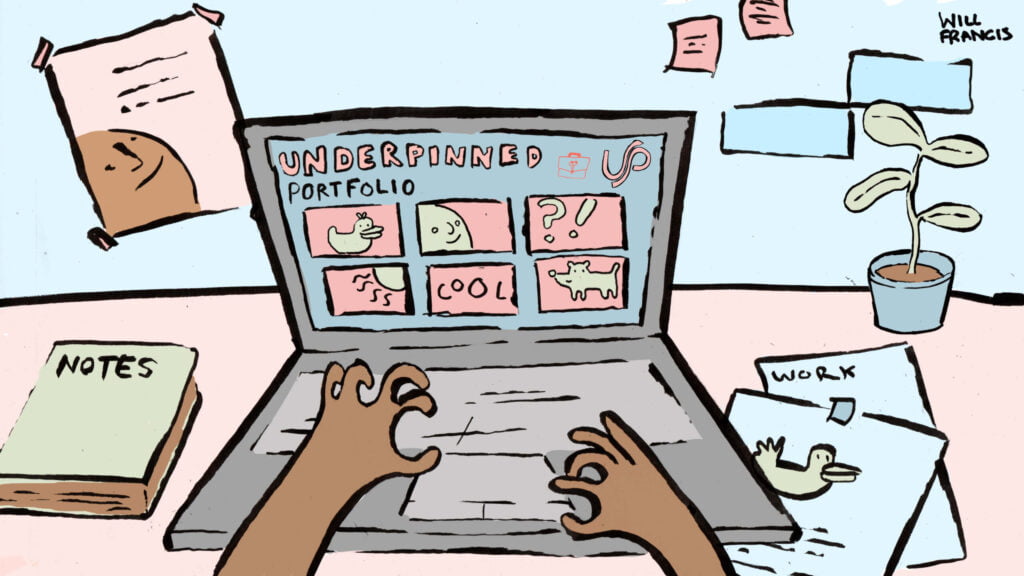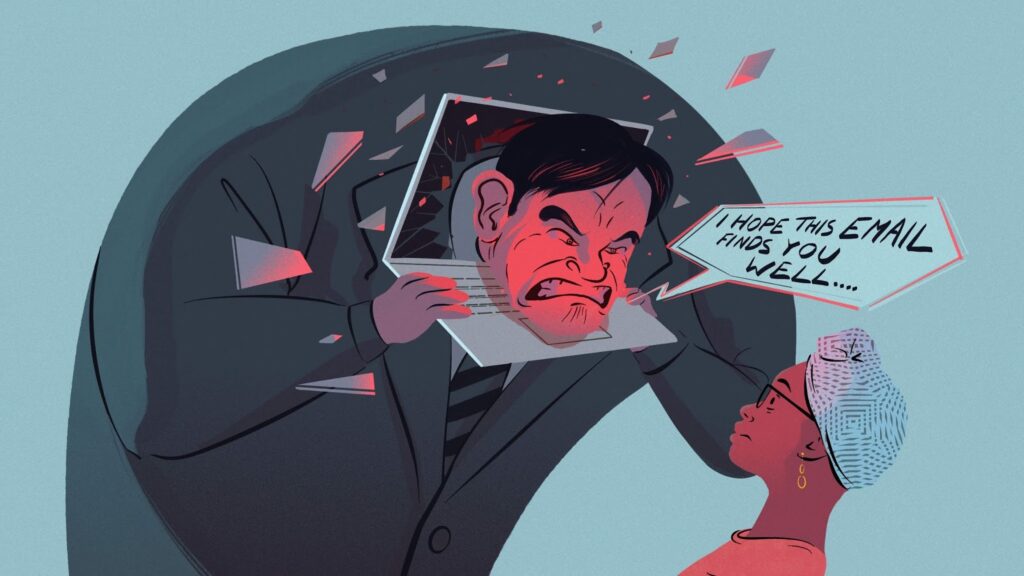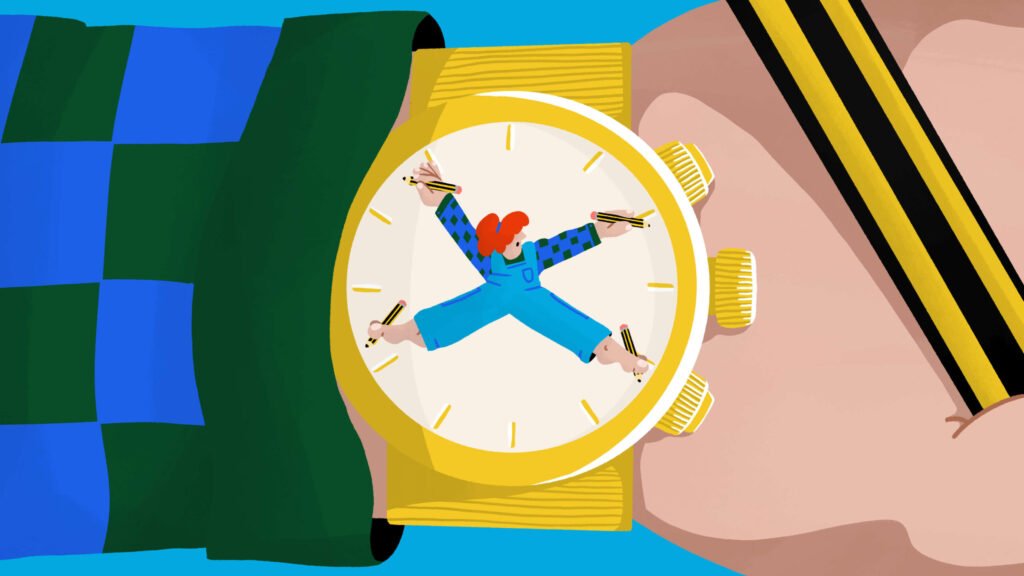Let’s be honest. If there was a way we could command Alexa or Siri to “build me a portfolio of all my most relevant freelance work”, we would absolutely do it. But taking the time to piece together a portfolio by yourself? Yeah. Nah. Maybe tomorrow.
My relationship with the portfolio has been long and tedious. When I first dipped my toe into the world of journalism around a decade ago (music reviews for the university newspaper, naturally, followed closely by my taking over – not as coup-like as it sounds – of a letters page for a weekly women’s magazine), I enthusiastically kept my cuttings and stuck them in a scrapbook. Same with online work; features and galleries and whatever else was diligently printed and stuck, printed and stuck. Portfolio? Completed it, mate.
However, whilst my velvet-touch Paperchase scrapbook spanning my work from 2009-2011 (only eight years out of date) is all well and good, it’s not exactly practical. Having edited a website for years and dabbled with freelance work across a variety of print and digital titles in my time, I have a lot of work out there. With the print work, I buy copies of the mags and ask for PDFs. With the online, it’s just kind of out there – floating around in the pixelated ether. For years, I’ve told myself I should do something about it, in case of website closures or contacts moving on. There would also be the obvious bonus of it making speculative pitches a lot easier to handle, too; no messy file attachments or clunky WeTransfer uploads that sit un-downloaded.
Of course, the portfolio splits into two main functions. One is to allow the artiste a kind of personal archive: somewhere to store work, allowing them to revisit past projects and reflect on an evolution of style, be it written, photographic, design-based…
The other, of course, is to persuade people that you are an excellent professional within your particular field, and that they should absolutely hire or commission you. As simple a premise as it is, being able to show off your work is, of course, the way to get you more.
“Some old school clients still expect to see a two-page CV but, as a digitally-savvy freelancer, you’ll need more than that to make a stand-out impression,” advises Victoria McLean, founder and CEO of cityCV.co.uk. “Your professional portfolio is evidence of your accomplishments and expertise. It allows you to build a personal brand that differentiates you from your competition.”
Whilst it’s all well and good to have an offline portfolio, a catalogue of your work, ordered and displayed as you wish, it’s not remotely practical for sharing with the people that might want to commission you or find out more about your work. So, why do so many of us procrastinate when it comes to setting up a portfolio?
“Procrastination, career led or not is a really common phenomenon amongst many and you will see that in many ways the more significant and important the scenario, and in this case, one’s career, the more likely someone is to procrastinate,” explains business coach Karen Kwong. “Subconsciously many fear that they might not do well with this next challenge which will bring them further in their career, so delaying doing it seems the ‘obvious’ yet ‘subconscious’ choice. With the pressures of the 21st century where one is rarely able to separate work from home life, the pressures are mounting all the time and therefore the fear of moving on to new challenges can seem even more daunting, unattainable and scary.”
That said, a lack of portfolio isn’t always because everyone is as lazy as me – some freelancers simply just don’t see the value or need of creating one. “I’m a freelance marketer and the scope of work I do is so varied that I prefer to send relevant samples to potential clients who I’m interested in working with,” @thisiswisbey told me via Twitter DM. “I don’t think I’ll create one in the foreseeable future. It’s just an added cost (for a domain name and so on), as well as more work in order to maintain it and keep it up-to-date/making sure it’s nicely designed.”
Front-end developer Dominick Taylor agrees. “I don’t have an online portfolio because I explain to my clients that the frameworks/libraries are continuously evolving,” he says. “So what I did for one client a few years back will often be considered outdated by today’s standards. I get my clients by word of mouth alone, and I’m selective in the type of clients I work with to ensure there’s a good fit and that expectations can be met.”
That said, if you’re a freelancer who’s speculatively touting for work and are regularly clogging up inboxes with attachments of PDFs or JPEGs, a portfolio can make a better touch.
“A portfolio definitely makes considering the work of a creative a lot easier,” reveals an editor, who wishes to remain anon. “Whether it’s a photographer for a shoot we want to run or a feature writer for an upcoming issue, getting an idea of their range of work makes it easier to understand what they can do. It’s reassuring to see what they can offer you, especially with tighter budgets meaning we need to be careful with every penny.”
Okay – so. How do you actually motivate yourself to begin the process of beginning your portfolio, whether it’s a spruce-up on LinkedIn, setting up your own website or utilising the excellent freelance tools that the very clever team at UnderPinned have recently launched? Alternatively, you might be thinking about showcasing your photography through a special Instagram account – you own the handle, perhaps, but have never posted on it. You get the jist – so how do you get the momentum to turn the thoughts into actions?
“A large project can feel overwhelming, especially when we don’t know where to start or we feel we won’t be able to complete it successfully,” muses confidence coach Lisa Phillips. “It may also be that deep down, the project doesn’t really inspire us and we know we will have to motivate ourselves to complete it. In these cases, it is better to just bite the bullet and do it. Face your fears, break the project down into workable chunks so it doesn’t feel overwhelming and set yourself deadlines to complete each section. Remind yourself how good it will feel when you have done it.
With that in mind: close your eyes. Actually, no, open them, read this and then close them. Recall a time when you were motivated to do something – it doesn’t matter what. Remember how you felt and borrow that buzz, that fire in your belly, and try to recreate the energy. Now, write down exactly what you need to do. Any problems or stumbling blocks? Write them down, too. Enlist the services of an inspiring-slash-slightly-scary friend who can keep you on track. You’re ready to go!
Need more inspiration? Okay. In the immortal words of Tom Haverford: treat yo’ self. If you find yourself lacking drive, promise yourself the one thing you’ve been craving once the portfolio has been completed (or, as in my case, started – hey, still progress). An early night in clean sheets (bliss), booking a head massage (double-bliss), getting those tatty kitchen tiles sorted out (er – sure)…
In short, whatever you need to do to get it done – do it. Once you’re ready to go, have the bit between your teeth and are pumped up, just begin. Because the sooner you start, the sooner the tedium of portfolio procrastination is over, people – until it needs updating with all your shiny new work, of course.




